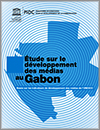Media Development Indicators (MDIs)

© Doha Center for Media Freedom
In accordance with its standard-setting role, IPDC has developed a comprehensive set of Media Development Indicators (MDIs) aimed at enabling the assessment of media landscapes at national level. These indicators, that cover all aspects of media development, are currently being applied in various countries worldwide to identify their specific needs in view of guiding the formulation of media-related policies and improving the targeting of media development efforts. >> More
Applying Media Development Indicators
The Media Development Indicators framework is currently being applied in countries across all regions to carry out in-depth assessments of their media environment. Until now, UNESCO has completed MDI-based assessments in the following countries:
 Bhutan |
 Croatia |
 Ecuador |
 Egypt |
 Gabon |
 Jordan |
 Libya |
 Mozambique |
 Nepal |
 Palestine |
 South Sudan |
 The Maldives |
 Timor-Leste |
 Tunisia |
Assessments are ongoing in Bolivia, Brazil, Colombia, Côte d'Ivoire, the Dominican Republic, Iraq, Liberia, Madagascar, Mongolia, Morocco, Myanmar, Rwanda, Swaziland, Togo, Uganda and Uruguay, as well as a regional project in South-East Europe. In most cases, UNESCO has partnered with a credible independent local research institution or media development organization, in charge of coordinating the study. Emphasis is placed on conducting multi-stakeholder consultations involving both private and public actors. These assessments result in the formulation of a series of evidence-based recommendations aimed at helping policy makers and media development actors to address identified gaps and foster enabling environments for free, independent and pluralistic media.
Other organizations have also used the MDI framework to carry out assessments at their own initiative, such as in Benin (project carried out by Media Foundation for West Africa and DANIDA).
UNESCO has published a practical guidebook, available in English, French and Arabic, to assist researchers in applying the Media Development Indicators, based on the lessons learnt from the first series of assessments.
The Media Development Indicators are also being used in the definition of a UN common approach to media development and good governance at country level.
Finally, the IPDC Bureau has revised the format for the submission of projects requesting submitters to explain the links between MDIs and the development objectives of their proposals.
Back to top


